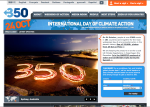I guess I’m like many other professional campaigners when it comes to where I get my news from. My media day looks something like this.
I wake up to BBC Radio 5 (or the Today program if my wife gets to the kitchen first), pick up a copy of The Guardian on my way to work, will take a look on the train at what those I’m following, who overwhelmingly hold left of centre positions, on Twitter are saying.
I will probably have a look at the BBC News or Guardian websites at lunchtime and then scroll through the long list of ‘progressive’ blogs on my RSS feed. When I get home I look forward to the next copy of the Economist or Foreign Affairs coming through the letterbox and I’ll end the day by watching Newsnight.
 So this post by Mark Pack about the importance of reading the Daily Mail got me thinking. Am I reading the right news sources or is it time for me to change my media habits?
So this post by Mark Pack about the importance of reading the Daily Mail got me thinking. Am I reading the right news sources or is it time for me to change my media habits?
Most organisations will have spent time researching what their ‘average’ campaigner is like based on information from your database. It’s an invaluable exercise to do as it means whenever your writing copy or developing a campaign you can have someone in mind that is the likely recipient of your hard work.
But do we think enough about the news sources that our ‘average’ campaigner is receiving their information from? Given that as individuals we’re wired to seek data that is compatible with beliefs that we have, do we spend enough time understanding the news media that many of our campaigners are consuming?
The reality is that if I were to draw a Venn diagram between the news media I consume and the ‘average’ campaigner for my organisation you wouldn’t find much in the middle, even less if I’m thinking about key audiences that I might want to bring in to support my campaign. So I’m challenged to change my habits.
As campaigners an awareness of the various monthly circulation or viewership figures that come out are really helpful in getting a better sense of what the majority of the public are reading or viewing. Here’s what the latest figures show.
Newspapers – As Mark Pack points out the Daily Mail claims to have readership of over 4 million people daily, although its circulation figures show it sells just over 2 million copies each day. The latest ABC circulation figures show that The Sun is the biggest selling tabloid and The Daily Telegraph has the highest circulation of the broadsheets. The Guardian and Independent have relatively small circulations. These figures don’t appear to include the free sheet ‘Metro’ that is ready by many commuters on their journey into our major cities.
Magazines – The latest ABC figures show a continued decline in sales of traditional magazines, with TV listings magazines having the highest circulation figures followed by titles such as Now and Closer. What’s interesting is these figures don’t include the massive circulations that free magazines produced by Tesco’s and other supermarkets have. The Tesco magazine goes to over 2 million people, and while circulation doesn’t equal readership it reaches almost as many people than the newspapers with the highest circulations.
 Radio – The last set of quarterly figures from Rajar show that Chris Evans is the voice that more people in the country wake up to, pulling in over 8.8 million listeners, with Radio 2 being the best performing station, listened to over 14.2 million people each week.
Radio – The last set of quarterly figures from Rajar show that Chris Evans is the voice that more people in the country wake up to, pulling in over 8.8 million listeners, with Radio 2 being the best performing station, listened to over 14.2 million people each week.
Social Media – Their aren’t similar figures available for social media, but the Independent this week has come up with ‘The Twitter 100‘ for the UK based on ratings from Peer Index and for blogging this list is instructive.
So next week I’m altering my media habits for 7 days. I’ll be picking up a copy of the Daily Mail alongside my Guardian, heading down to the Supermarket to grab some copies of their free magazines, turning into Radio 2 and following some of the ‘Twitter 100’.
It’s a discipline that I hope will help me to better understand where the majority of the campaigners I’m trying to get to support my campaign are getting their news information and the impact that has on the worldview and the context that they place their ‘activism’ in.
As I read, watch and listen I’m going to be asking myself some questions;
- How do they tell a story? What level of detail do thy use? What angle do they focus on?
- How would they communicate my campaign? How much space do they give to related issues?
- What others topics do they seem to be most concerned about?
As campaigners, we also need to be aware of the news sources that the decision makers that we’re trying to target are reading and listening. On that a few years ago Duncan Green shared some useful insight drawn from research carried out by Oxfam, my sense is that is still fairly accurate, while a recent Freedom of Information request showed which newspapers and magazines were arriving in the offices of different ministers.
What are the key media sources for the campaigners you work with? How do we ensure we don’t get stuck in our own news media bubbles?

 Why?
Why?
 1. Last week saw the launch of
1. Last week saw the launch of 
 UK-based, in the last year it’s focused on a range of issues from tax dodging to the NHS Bill, energy prices to saving our forests.
UK-based, in the last year it’s focused on a range of issues from tax dodging to the NHS Bill, energy prices to saving our forests. Launched just a few weeks ago, but already generated an impressive 80,000 actions towards Apple and boast 200,000 members.
Launched just a few weeks ago, but already generated an impressive 80,000 actions towards Apple and boast 200,000 members. A global movement to advance the interests and rights of LGBT people,
A global movement to advance the interests and rights of LGBT people,  Global movement on climate change. Name is linked to the need to reduce carbon emissions by under 350 parts per million to prevent catastrophic global warming.
Global movement on climate change. Name is linked to the need to reduce carbon emissions by under 350 parts per million to prevent catastrophic global warming. A site for individuals to take action on whatever issues they choose, as well as providing a platform for organisations.
A site for individuals to take action on whatever issues they choose, as well as providing a platform for organisations.
 As a response, the papers campaign is calling on the adoption of
As a response, the papers campaign is calling on the adoption of  Taking supporters on a journey – Go to the website and the campaign offers a menu of three actions you can take to immediately support the campaign –
Taking supporters on a journey – Go to the website and the campaign offers a menu of three actions you can take to immediately support the campaign – 
